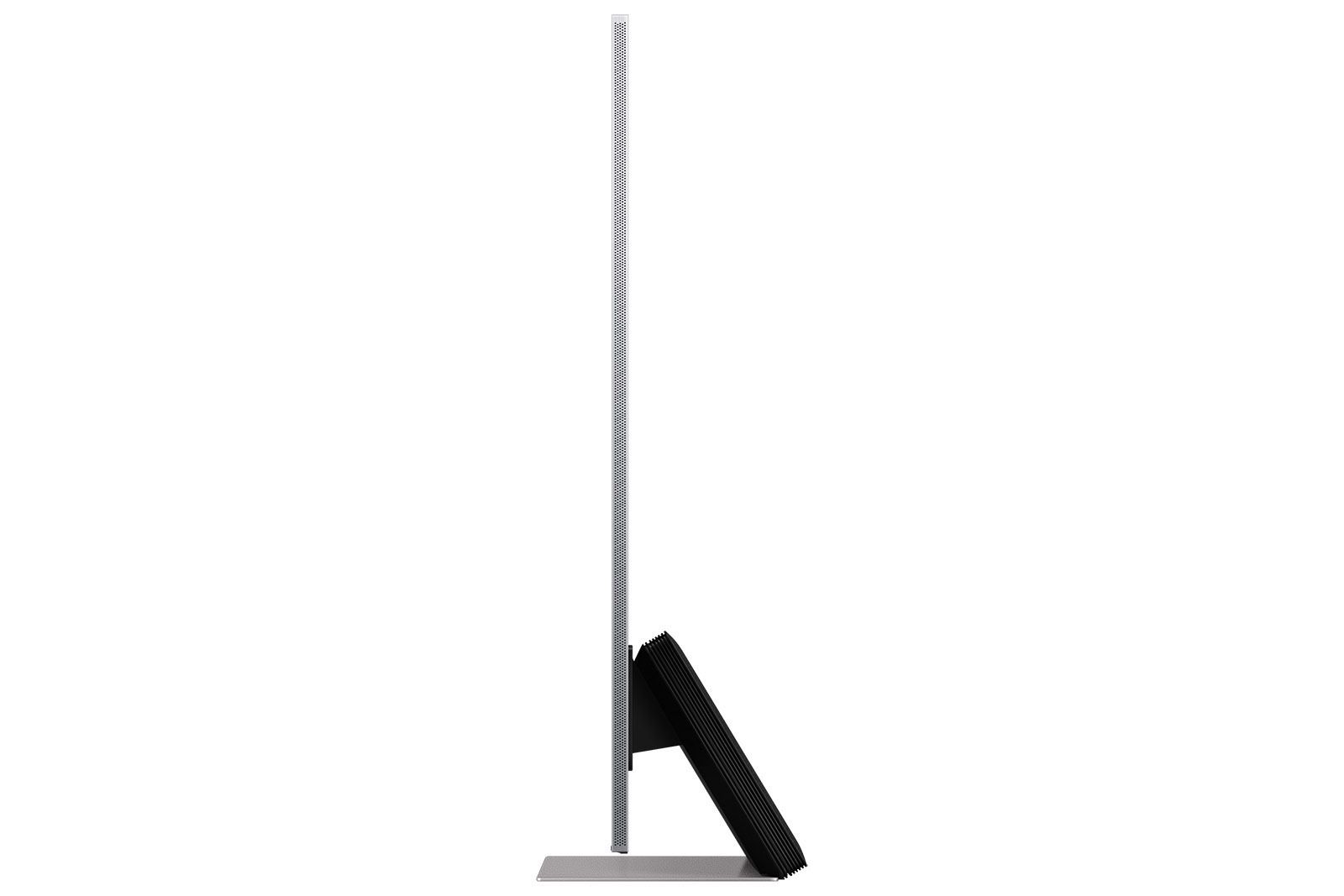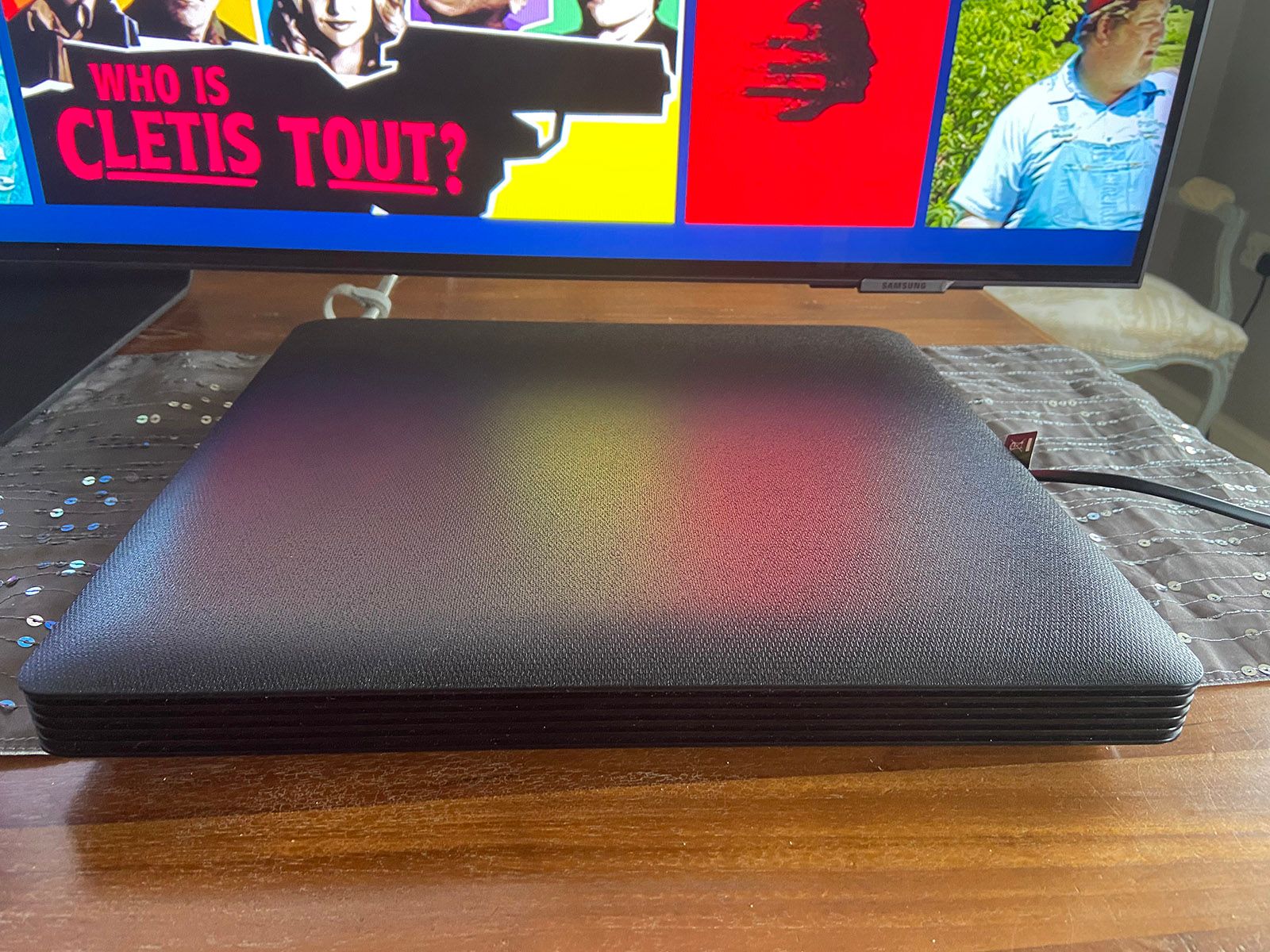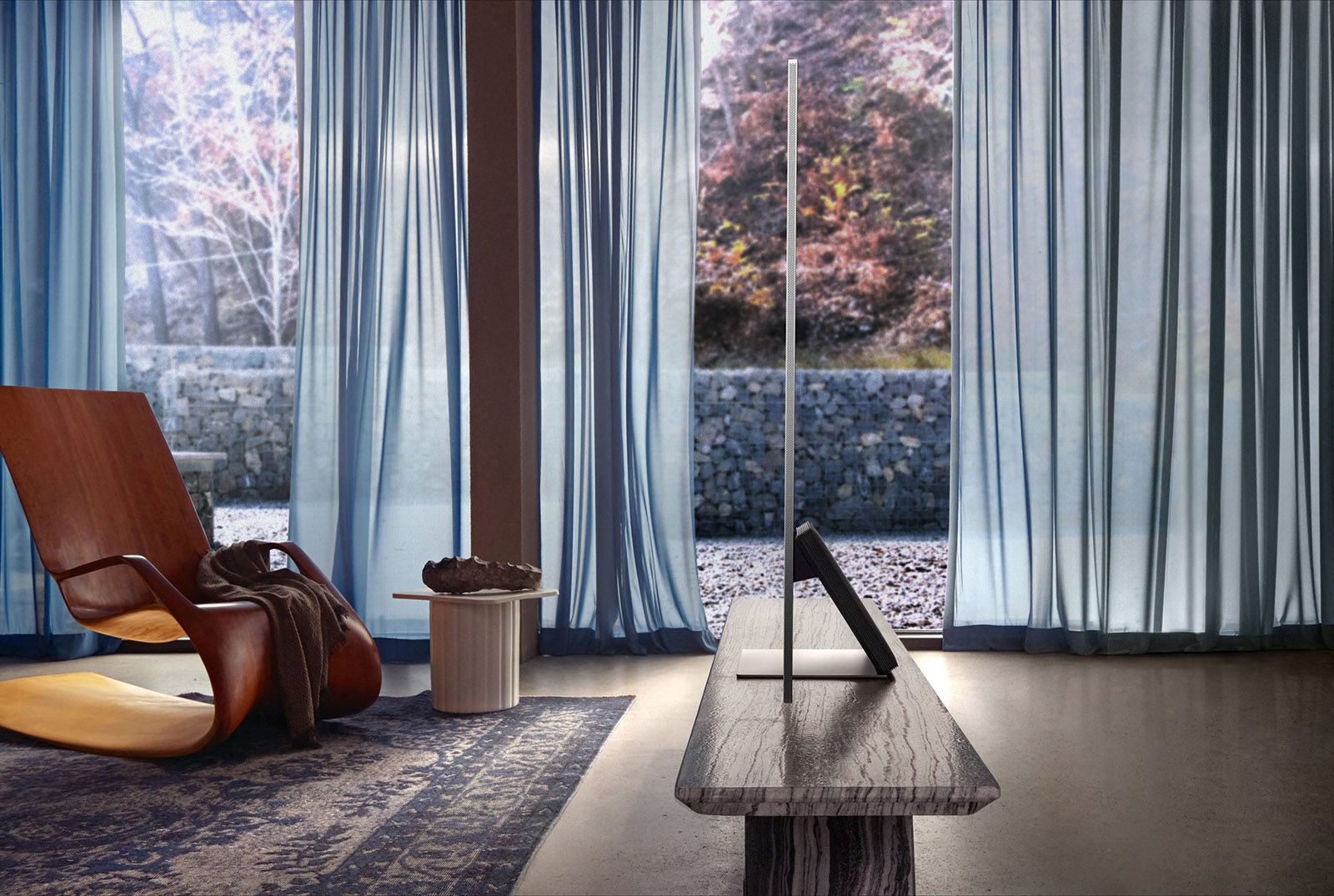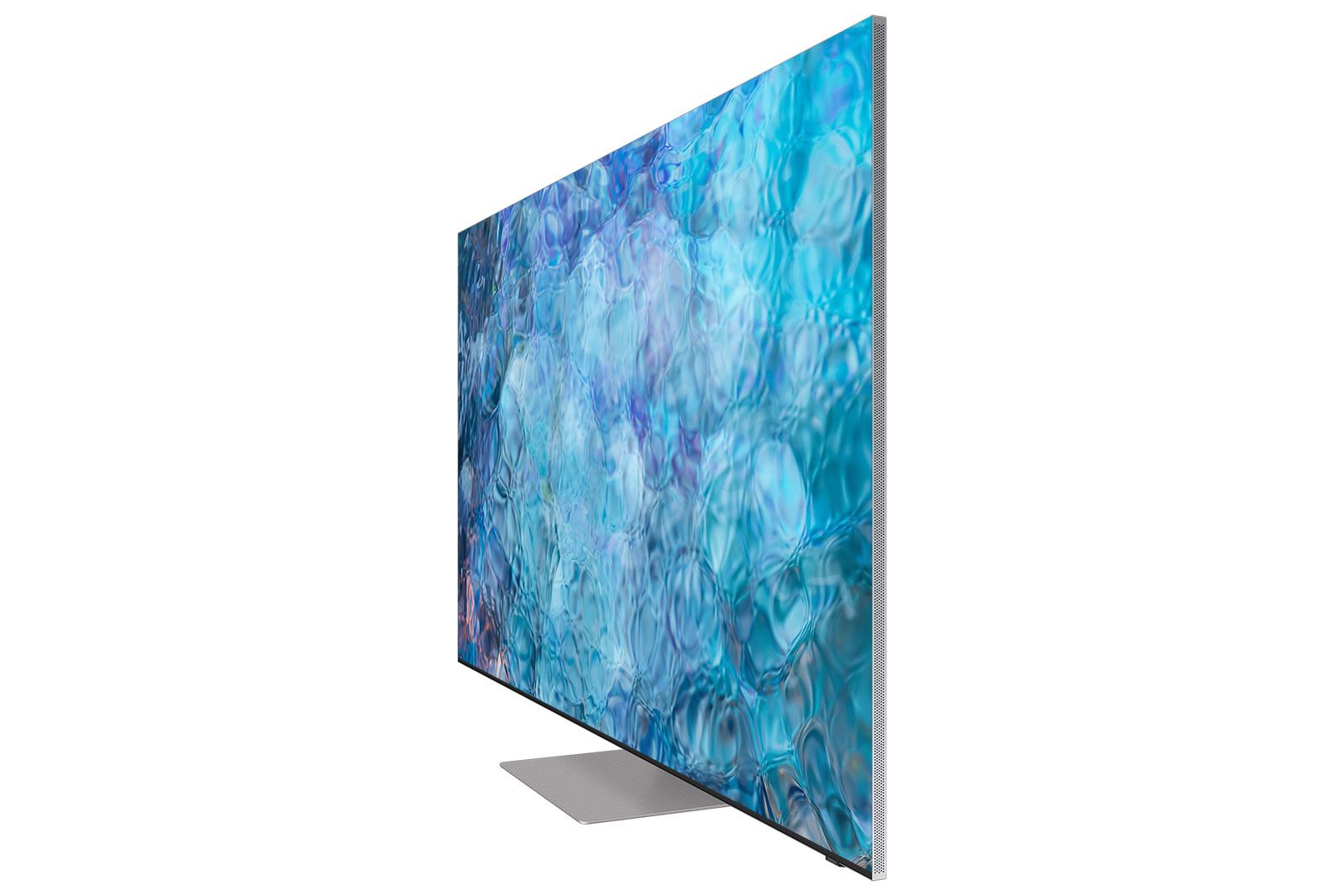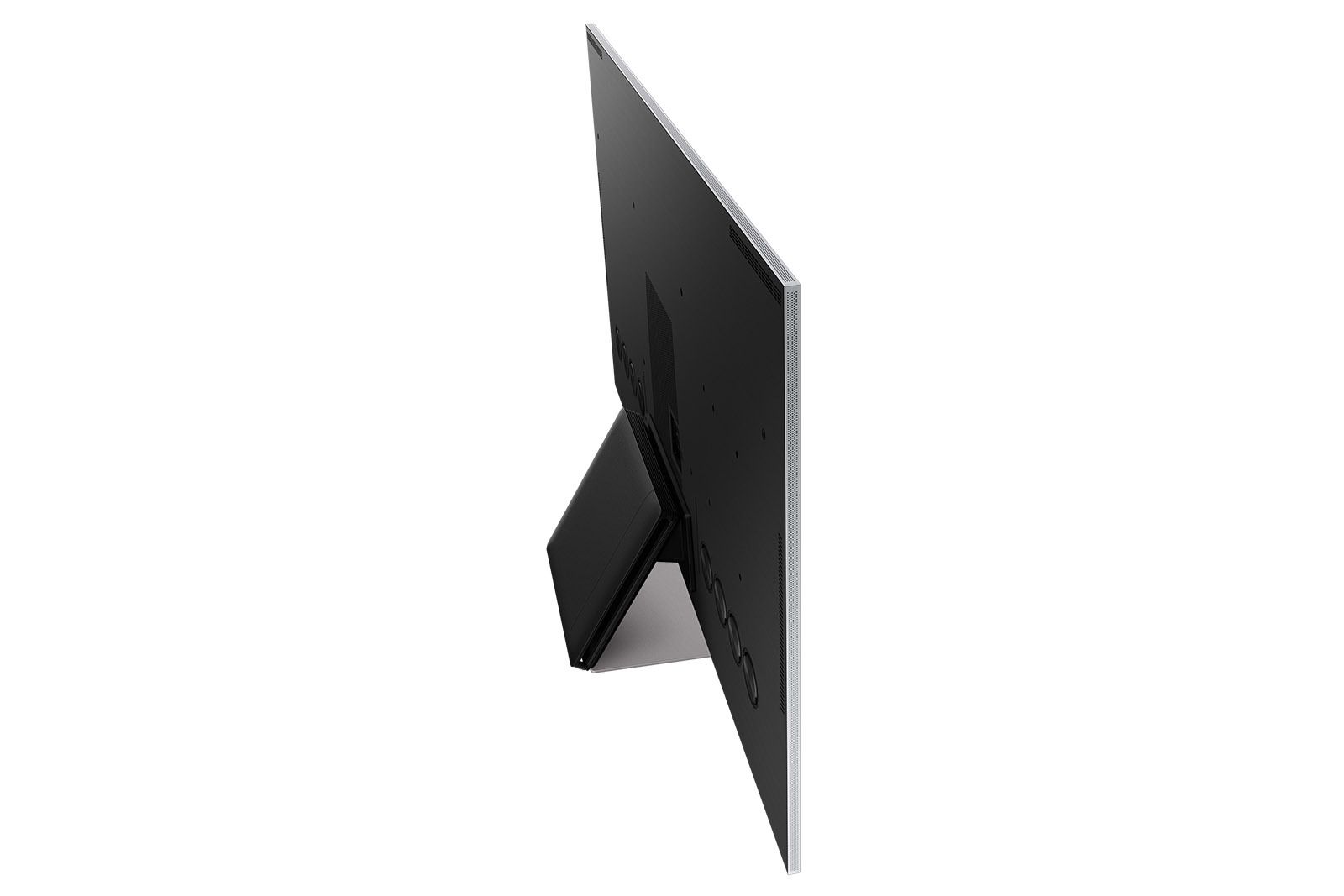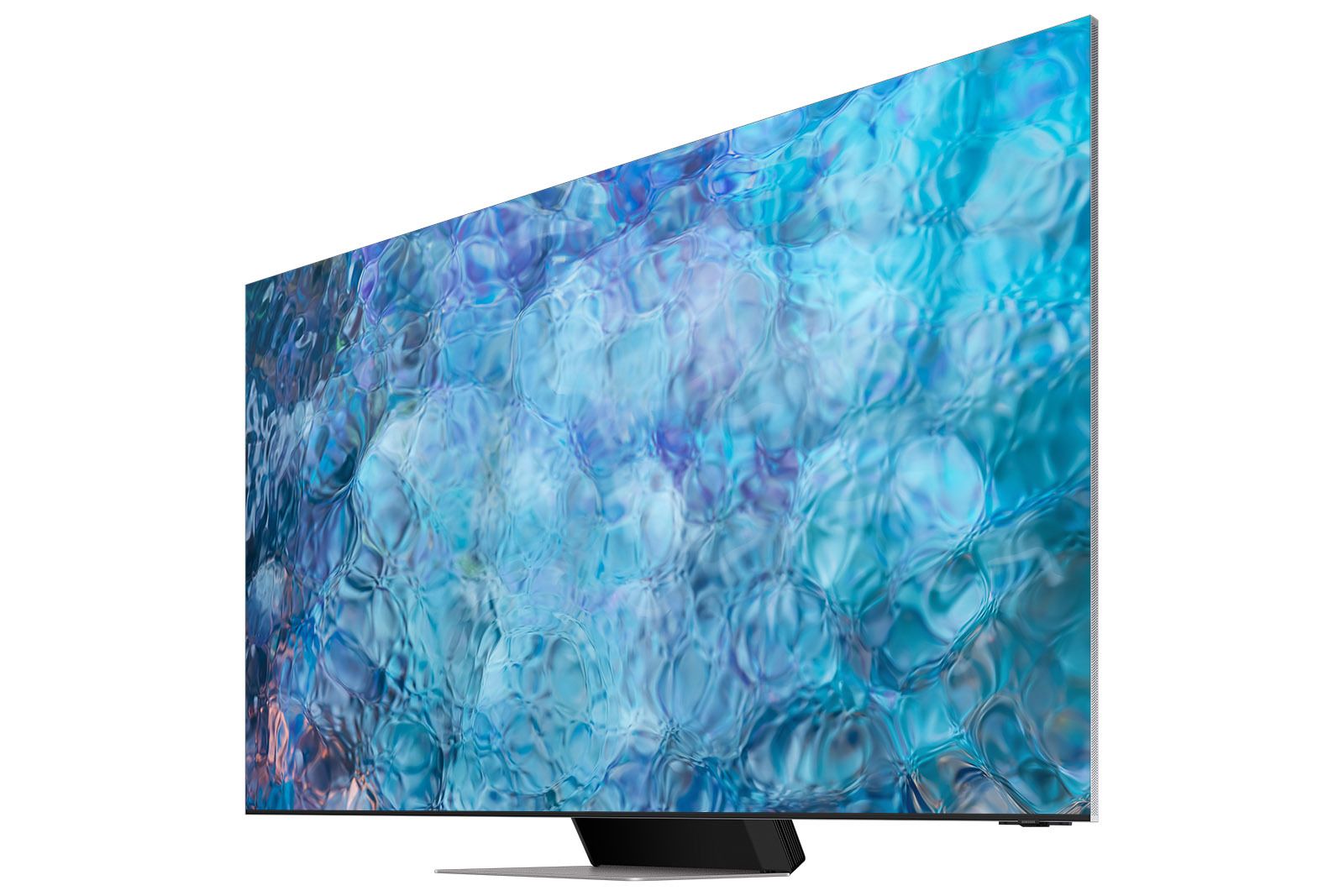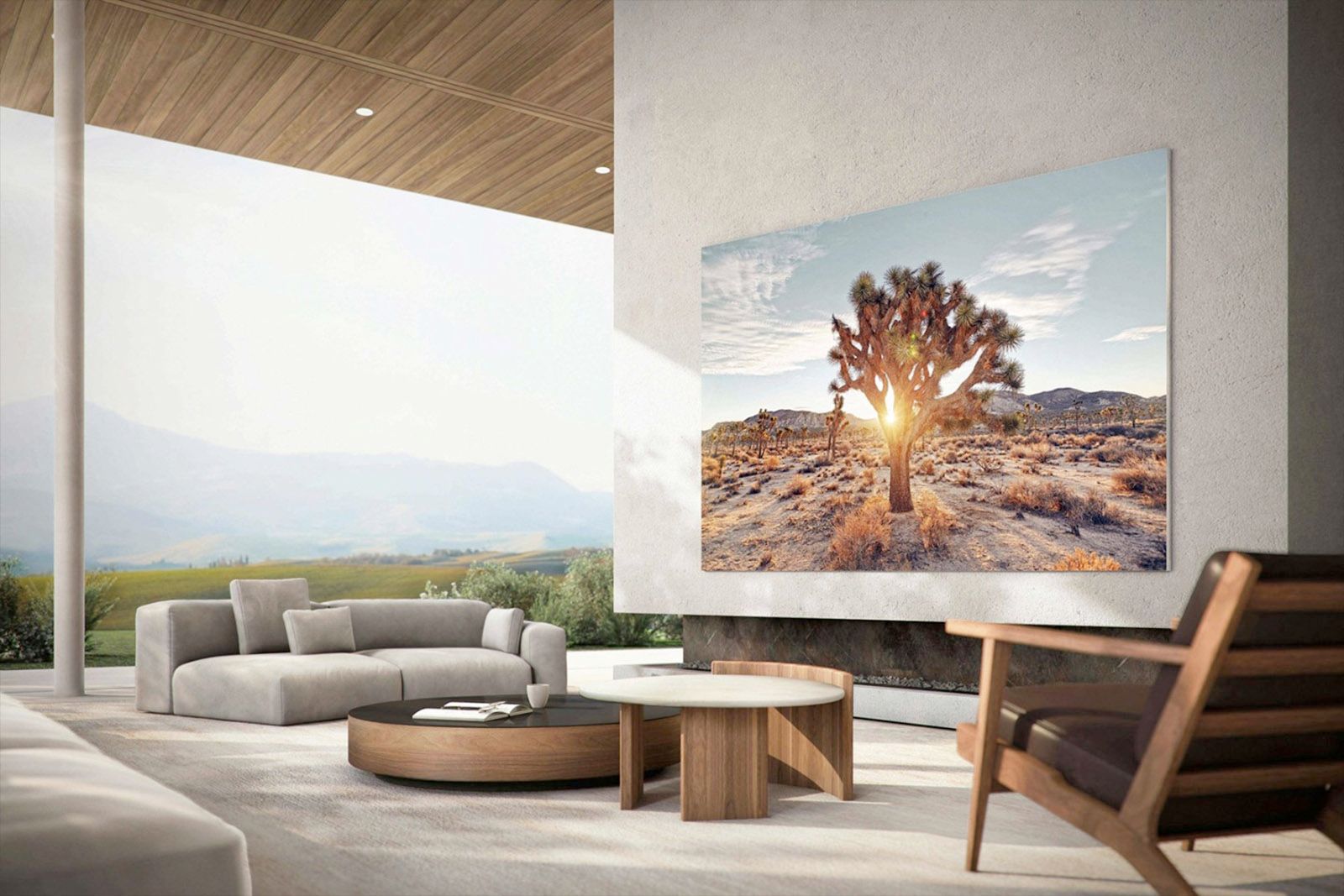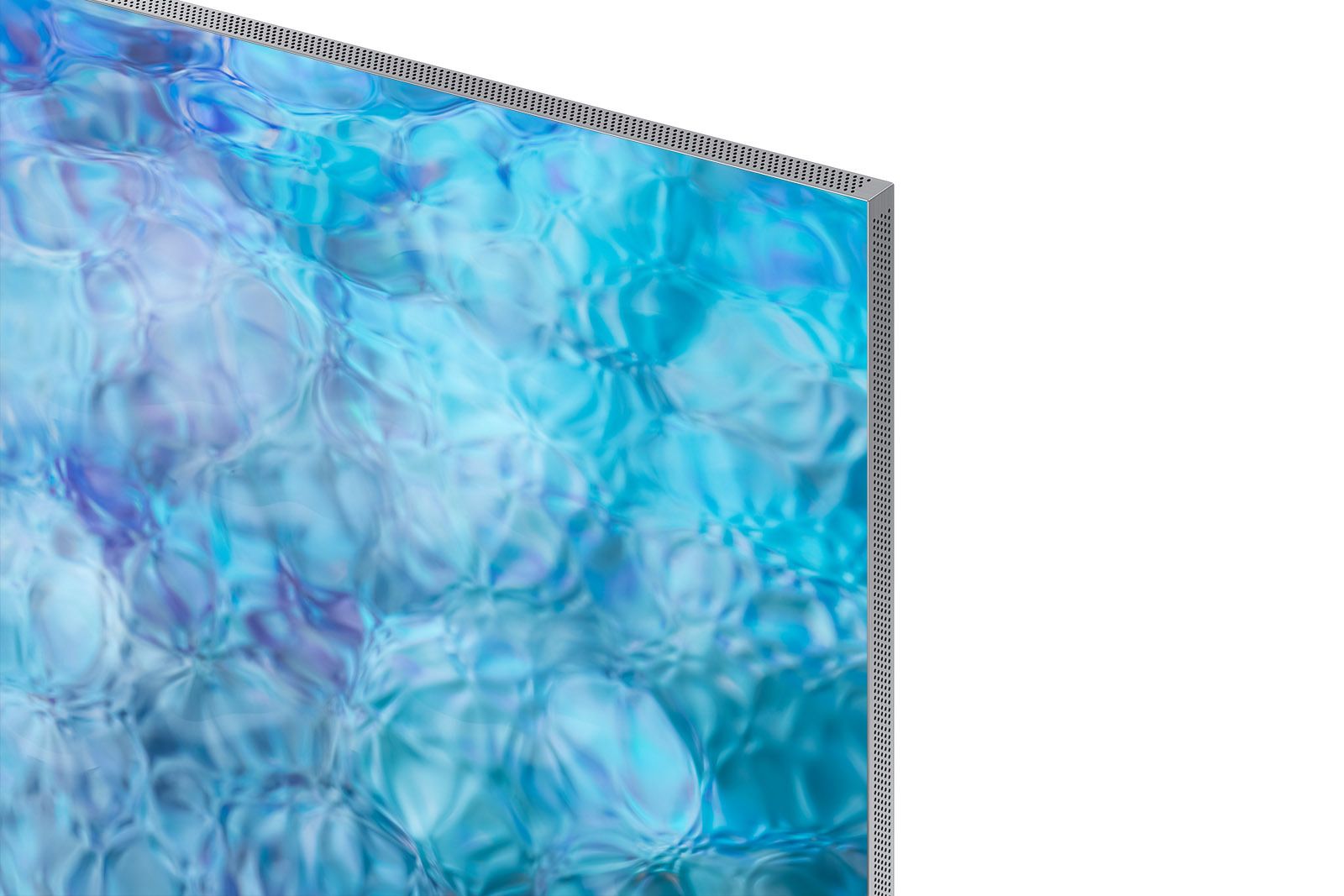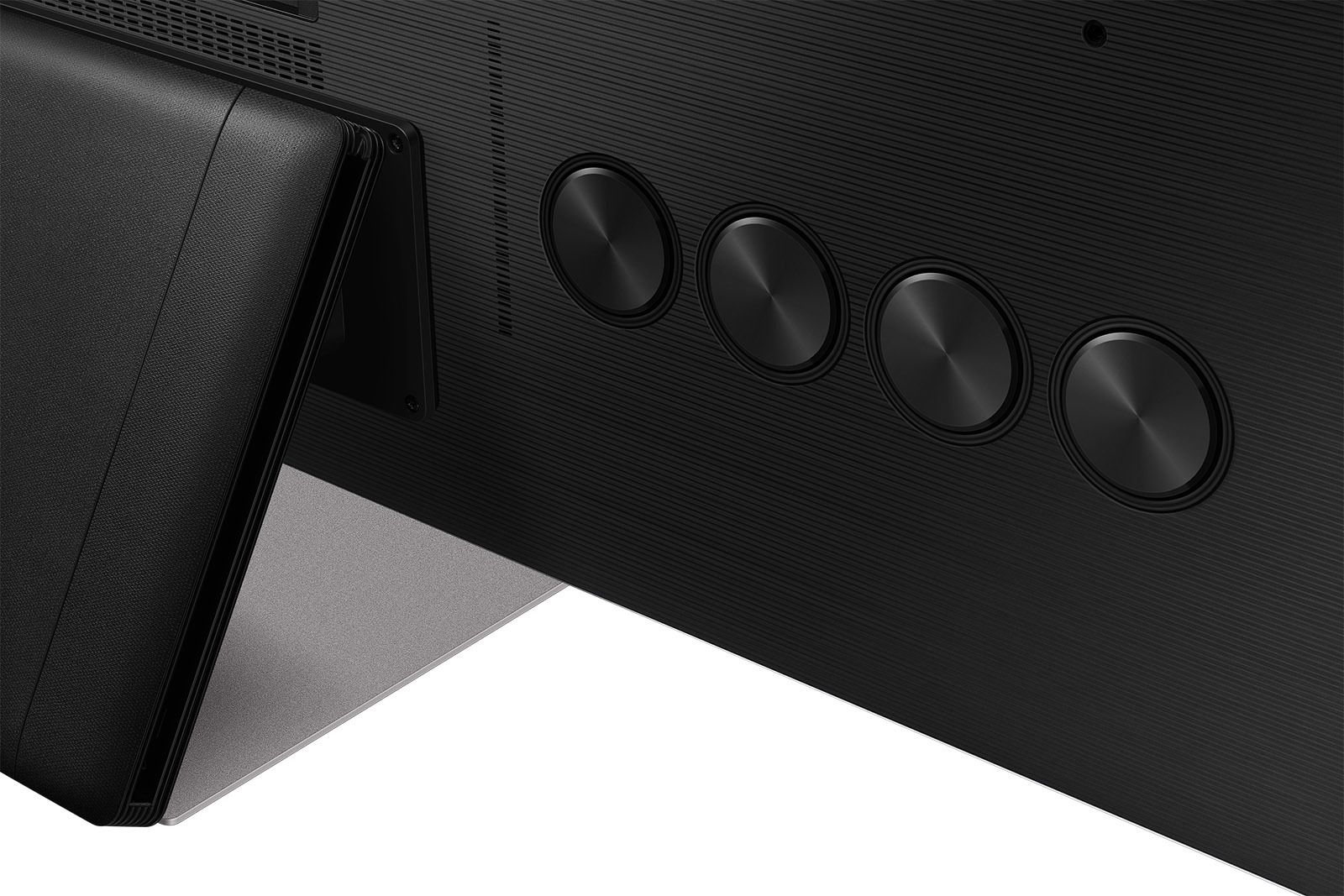The QN900A almost feels like the result of Samsung TV engineers sitting down, compiling a list of all the very latest bleeding-edge (non-OLED) TV technologies it could think of and then deciding to stick them all inside a single dazzling product.
There's new Mini LED lighting technology, for starters. There's a new backlight control system that supports pretty much four times as many separately controlled light zones as any Samsung LCD TV before. There's QLED wide colour technology. The screen's native resolution is 8K rather than 4K. Its connections support playback of all the latest and greatest gaming graphics features. And as for its design, well, it's quite the stunner.
But with a high price and resolution technology that's arguably a stage ahead of current content standards, does the QN900A make sense for most buyers?
Our quick take
The Samsung QN900A is a dazzling introduction to the joys of Mini LED technology. Backed up by an uncompromising local dimming system, the move to Mini LED helps Samsung's flagship 8K TV produce a consistently jaw-dropping HDR performance.
Its high price tag will clearly be an insurmountable hurdle for many, and it would certainly be nice to see this drop a bit as we head towards sale season. For people with the financial wherewithal to treat themselves to a TV that's pretty much the dictionary definition of cutting edge, though, Samsung ticks all the boxes here.
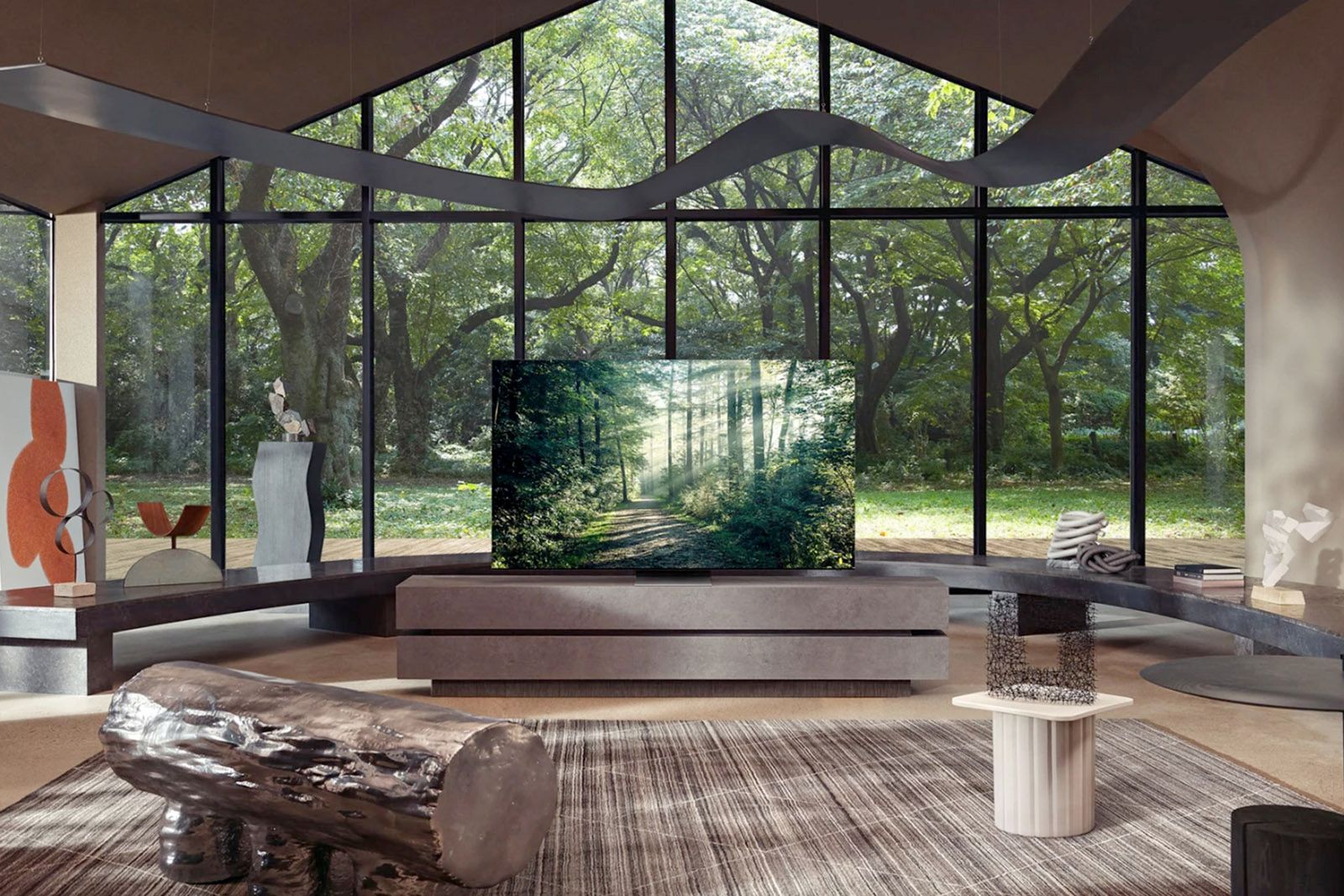
Samsung QN900A Neo QLED 8K TV - 4.5 / 5
| FOR | AGAINST |
|---|---|
|
|
SAMSUNG 75-Inch Class Neo QLED 8K QN900A Series
Design
- 4x HDMI 2.1 inputs, 3x USB ports
- LAN & Wi-Fi multimedia options
The QN900A oozes flagship style from every pore. Pores which it actually has in the form of a lovely perforated finish applied to all four of its edges to aid with sound output (but more about that at the end of this review).
Its bezel and sides look like they've been exquisitely chiselled from a stainless steel - yet when viewing the TV head-on this premium frame is barely visible because it's so ground-breakingly thin. This almost bezel-free head-on look earns the TV its 'Infinity' marketing name, as the picture seems to have no bounds.
Even the set's rear is more attractive than most, with its flat shape and striated finish only broken by a recessed connection point for the TV's One Connect box - the external box which houses all of the TV's connections and jacks into the TV via just a single cable - and eight powerful-looking rear-firing mid-range/bass speakers.
Moving to Mini LED lighting has enabled Samsung to make the QN900A much slimmer round the back than its predecessor, so that it's now a much more effective wall-hanging option. Its centrally-mounted desktop stand is both handsome and supremely well built, for people who would rather go that more conventional route. The angled neck of the stand has a practical use, too, since the One Connect box can be attached to it.
This is even more impressive when you consider how many connections the One Connect carries. Four HDMIs lead the way, all built to the latest HDMI 2.1 standard and able to support 40Gbps of data (and 4K120 where applicable). There are three USBs for multimedia playback too, along with an optical digital audio output and the Wi-Fi and Bluetooth wireless connectivity we now expect of pretty much any TV. Note that there's no physical headphone port; Samsung expects people to use a Bluetooth headset these days, it seems.
Picture Features
- HDR Support: HLG, HDR10, HDR10+
- Processing engine: Neo Quantum Processor 8K with AI
There's so much going on with the QN900A that it's hard to know where to start. But since it's the newest kid on the block, let's go for Mini LED. This technology involves shrinking the LEDs that illuminate LCD screens so that it's possible to fit far more of them in the same screen area. Mini LED opens the door to slimmer TV designs, increased brightness and, most importantly, much finer light control.
The control part of the Mini LED story is backed up on the QN900A by a massive 1920 separately controlled dimming zones. This means it can output different levels of light from almost 2,000 different sections of the image at any given moment.
This is still, of course, a far cry from the way every pixel in an OLED screen makes its own light. But Mini LED's application moves far beyond the maximum 500 or so zones found on previous award-winning Samsung flagship LCD TVs.
The QN900A uses its new-found light control capabilities to achieve a phenomenal brightness of around 4000 nits. This compares with an absolute maximum of under 1000 nits from OLED TVs.
This 4000 nit figure is only available in the Dynamic preset, though, and the set can only sustain it for a short period of time over a small area. Otherwise the peak brightness of 1650 nits - as achieved and sustained in the Standard picture preset - is a seriously potent figure. Especially when such brightness can be controlled so finely by the local dimming system.
Another headline feature of the QN900A is its 8K resolution. This adds up to four times as many pixels as you get on a 4K TV. Some might argue this is overkill at a time when native 8K sources are essentially restricted to a few YouTube videos. However, there's still a chance more 8K content will turn up eventually.
Plus, crucially, the QN900A's skill at upscaling HD and 4K footage to the screen's 8K resolution is bolstered by Samsung's new Neo Quantum 8K processor. This brings with it the combined picture handling experience of no less than 15 separate neural networks that Samsung has put to work in its labs by poring over tens of thousands of different images. The video processors in 2020's Samsung 8K TVs only drew on the 'AI' knowledge accumulated by a single neural network.
The QN900A is, as its title says on the Samsung website, a QLED TV. This signifies that it uses Quantum Dots to make its colours rather than less versatile LCD filters. This is especially important on a TV as bright as this, as applying so much brightness to a standard filter-based colour system could well result in colours looking rather washed out and thin.
While Samsung is a bit stingy with some of its cheaper models when it comes to support for the latest gaming graphics features, the QN900A ticks all the boxes. All four of the HDMIs support 40Gbps data rates, opening up support for 4K gaming at 120Hz refresh rates, Variable Refresh Rate (VRR), and Auto Low-Latency Mode (ALLM), all of which enables the TV to switch in and out of their Game presets automatically depending on whether your console is being used for gaming or video playback.
The QN900A's variable refresh rate support covers the AMD FreeSync Pro and Nvidia G-Sync versions, as well as the VRR system that's part of the HDMI 2.1 specification.
The only new gaming feature not covered by the QN900A is Dolby Vision. This advanced HDR system isn't supported by any Samsung TVs, even though it is now available for gaming on the Xbox Series X as well as PCs.
The QN900A does support the standard HDR10 HDR format, as well as the HLG system required for Sky Q boxes and the BBC iPlayer's HDR streams, alongside the HDR10+ system that Samsung itself developed as an alternative to Dolby Vision. But even outside of the gaming world Dolby Vision content continues to be more widespread than HDR10+.
Smart Features
- Smart System: Tizen-based Eden platform
While Samsung hasn't radically tweaked its Eden smart TV platform for 2021, it didn't really need to.
On the content side, all of the streaming apps most people will want are present and correct: Amazon Prime Video, Netflix, Disney+, Apple TV and the catch-up services for seemingly all of the UK's main terrestrial broadcasters.
The only catch is that Samsung doesn't play ball with either of the Freeview or YouView platforms that bring the UK terrestrial broadcaster catch-up apps together under a nicely presented 'umbrella' system.
Unlike most smart TV systems these days, the Eden home screen is superimposed over only the bottom third or so of the screen, rather than completely taking it over. This compact approach means you can browse for on-demand content while still watching TV.
The link icons are big enough to be easy to read, but small enough for plenty of links to appear on screen at any one time. The way a contextualised second tier of direct show links pops up when a service app on the bottom row is highlighted works great too, and it's possible to scroll down to lots more content 'shelves' from the home screen.
The strong visual interface is backed up, too, by an excellent voice recognition/control system.
Picture Quality
The QN900A sets new standards for LCD technology. Especially when it comes to contrast. In fact, trying to catch its new Mini LED light system out with HDR scenes containing extreme combinations of dark and light elements actually just gives it an opportunity to show off.
The set can hit such deep, neutral black levels, for starters, that it's no longer possible to pick the screen out of the darkness during fade-to-blacks in a blacked-out room. This is a famous trick that's previously only been possible with OLED TVs.
Much more important, though, is how consistently the QN900A is able to hold onto these ground-breaking black levels. There's no sign of distracting fluctuations in the baseline black levels, for instance, when using most of the picture presets. Even better, there's pretty much zero visible light blooming/haloing around bright objects, even when they appear against pitch black backdrops.
Samsung had a strong reputation even pre-Mini LED for avoiding blooming with its premium LCDs. The key difference here, though, is that keeping backlight blooming at bay doesn't require the TV to reduce the intensity of bright highlights nearly as much as previous Samsung TV generations.
This consistency makes the picture more immersive and greatly enhances the sense of true contrast the screen can deliver, unlocking more impact from one of HDR's most attractive features.
While the increase in contrast is the star of the show in terms of improvements over previous Samsung (and other) LCD TVs, the QN900A backs this up with stellar efforts in pretty much every other picture department, too.
The screen's extreme brightness does a great job, for instance, with full-screen bright HDR content, such as sun-drenched landscapes or spotlit sports stadiums. There's a really life-like intensity to such full-on imagery that only a handful of other LCD models can rival.
Samsung seems to have improved the way its QLED technology works with the QN900A's new light engine, too. Vibrant tones explode off the screen with remarkable punch and richness, ensuring you get the maximum benefit from the wider colour spectrum that invariably accompanies HDR content.
Colours aren't just ultra-potent, though. Samsung's processing engine is able to delineate enough subtlety in the rendering of colour tones to keep up in finesse terms with the screen's enormous 8K resolution. This bolsters the intense realism and three-dimensionality of high quality sources - especially native 8K ones - while making the point that having more pixels to play with isn't just about more sharpness.
Not that the QN900A is lacking in sharpness. Tweaks to Samsung's wide-angle technology mean there's no longer the slightly soft look to pictures that was visible on some Samsung 8K sets from back in 2018. Native 8K sources look so rich in detail and pixel density that viewing feels more like looking through a window than looking at a screen.
More importantly given the current state of the content world, the QN900A's upscaling of 4K sources is masterful. With so much AI know-how to draw on, Samsung's flagship TV manages to add the tens of millions of extra pixels required to make 4K into 8K so successfully that it's easy to forget the screen is 'only' showing a 4K source.
Especially exceptional is how well the processing removes any noise that might be in the source, ensuring that the only thing that gets upscaled and emphasised is real image information. The pristine results emphatically put to bed all those old 'upscaling is bad' memories associated with early HD TVs back in the day.
Samsung's motion processing, on the other hand, isn't helpful in its default state. It causes noticeable unwanted processing side effects around the edges of moving objects. Happily the set doesn't look excessively juddery with all motion processing turned off, though. Plus there's a Custom motion option - designed for the relatively adventurous - that gently massages judder without the results looking processed or unnaturally fluid if the separate blur and judder settings are set to around three of their four-level options.
While the QN900A delivers its most spectacular pictures when using its Standard preset, which takes advantage of the TV's unique technological strengths without pushing things into the crazy territory occasionally strayed into by the Dynamic preset, Samsung now also caters for fans of 'accurate' pictures by including both a good Movie preset and even a Filmmaker Mode that meets the approval of the independent UHD Alliance organisation.
Not content with looking outstanding with video, the QN900A is a spectacular gaming screen. Its brightness, contrast and colour potency are a joy to behold with the latest HDR-enriched games, especially at 120Hz. The screen keeps the time it takes to produce its pictures to less than 10ms in its Game mode, too, which is an outstanding result. Especially for an 8K TV.
There are one or two weaknesses hiding behind the QN900A's mostly bravura efforts. While viewing angles hold up better than those of most LCD TVs, for instance, the backlight blooming that's so conspicuously absent when viewing the TV head-on can start to become quite noticeable with off-axis viewing. Next, while most colours look phenomenally punchy, rich reds can become slightly pink or purple on occasion.
Finally, the Mini LED's even 1920 lighting and dimming zones don't result in complete contrast consistency. With very small bright objects, such as stars or distant lit windows against a night sky, the QN900A still has to dim the bright object down quite substantially to keep localised backlight blooming at bay. By limiting such dimming issues to much smaller objects than before, though, they appear far less often - and are far less distracting and obvious even when they do appear.
Sound Quality
The QN900A isn't short of speakers. They're tucked inside all four of the screen's sides (hence the perforated bezel finish), and there's a blockbusting array of eight large drivers firing out of the TV's rear.
So it's a bit disappointing that the QN900A only sounds good rather than fantastic.
The best thing about the QN900A's sound is the accuracy with which it can place sound effects both on and beyond its screen. This is down to Samsung's so-called Object Tracking Sound system, which combines impressive processing with the expansive speaker array to create a detailed and accurate soundstage.
The sound struggles to project forward, though. Most of the action seems to happen only to the side of or behind the screen. Bass is only fair to middling too (though using the Amplify sound setting helps), and the sound just doesn't have the attack, aggression and dynamic range of the very best-sounding TVs.
With this in mind it might be worth trying to buy the TV in conjunction with a Samsung soundbar that supports the brand's Q Symphony feature, where the TV and soundbar effectively combine their speakers' efforts.
SAMSUNG 75-Inch Class Neo QLED 8K QN900A Series
To recap
For those who can afford the price of entry, this 8K Samsung set is a cutting edge marvel. Its 'Infinity' design is gorgeous, its feature list reads like an encyclopaedia of the latest TV tech, and it puts all of its technologies to outstanding use in producing pictures the likes of which haven't been seen before.

